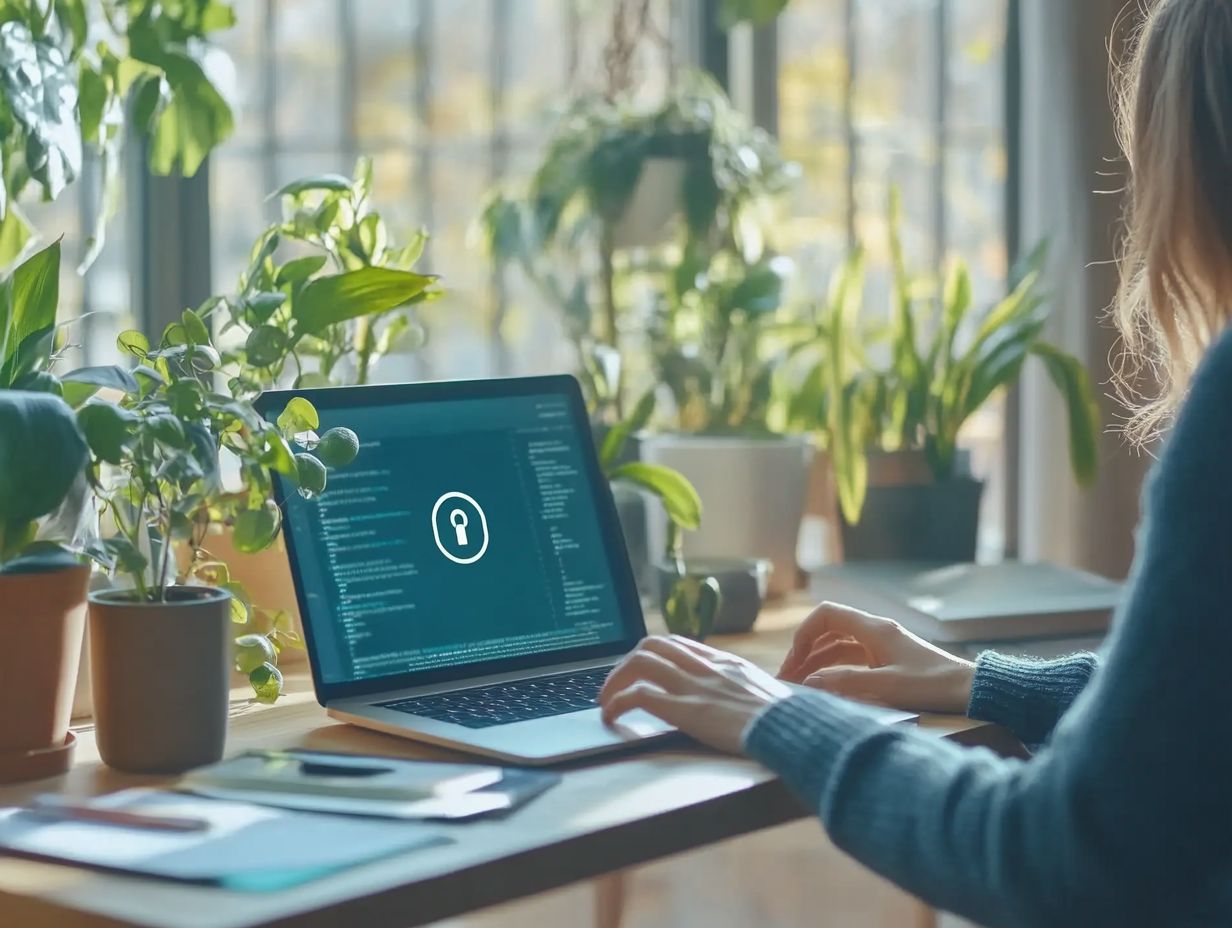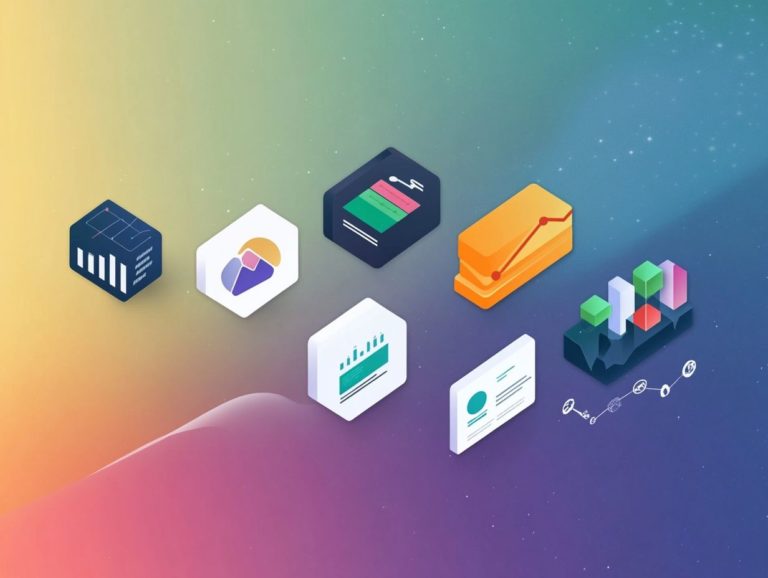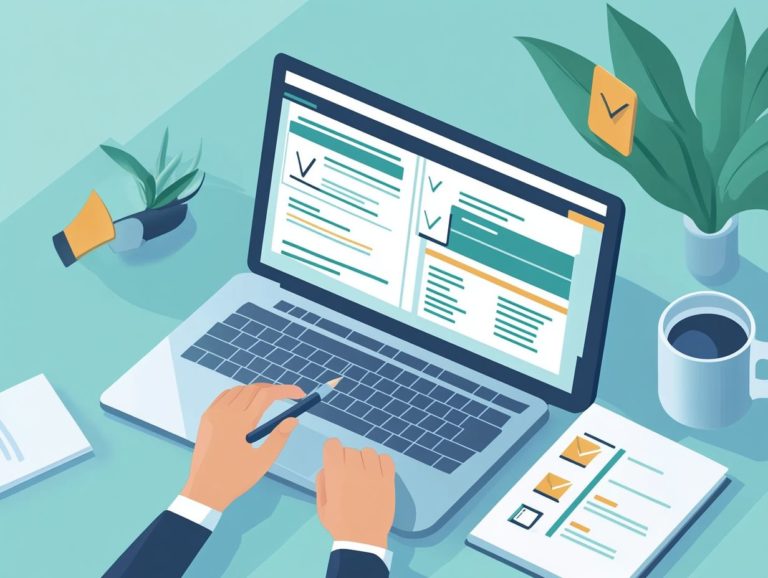SaaS Security: Best Practices for Your Business
In today s digital landscape, Software as a Service (SaaS) has revolutionized the way businesses operate. It provides unparalleled flexibility and scalability. However, these advantages bring significant security challenges that you cannot afford to overlook.
This exploration delves into the critical aspects of SaaS security. It guides you through the fundamentals, highlights common threats, and presents best practices for implementation. As compliance regulations grow stricter, ensuring robust SaaS security is more crucial than ever.
Join us on this journey to discover the essential steps to protect your business in this ever-evolving environment.
Contents
- Key Takeaways:
- Understanding SaaS Security
- Importance of SaaS Security for Businesses
- Common SaaS Security Threats
- Best Practices for SaaS Security
- Implementing SaaS Security in Your Organization
- Ensuring Compliance with SaaS Security Standards
- Frequently Asked Questions
- What is SaaS security and why is it important for my business?
- How can I boost my SaaS security effectively?
- How can I ensure my SaaS provider has proper security measures in place?
- What are some risks associated with SaaS security?
- Can I customize security settings for my SaaS applications?
- What should I do in case of a security breach on my SaaS application?
Key Takeaways:

- SaaS security is crucial for protecting your business from cyber threats and data breaches.
- Identifying and mitigating risks is essential for maintaining the security of your SaaS applications.
- Implementing adequate security measures in SaaS and ensuring regulatory compliance are key steps to safeguard your business and customer data.
Understanding SaaS Security
Understanding SaaS security is vital for organizations that leverage cloud applications to enhance operations while protecting sensitive data.
As your reliance on SaaS grows, so does your exposure to various security threats. Act now! Implement robust security practices and a comprehensive data protection strategy to effectively mitigate risks.
In an era of rising cybersecurity incidents, particularly data breaches, building a strong security setup is essential for maintaining user trust and ensuring compliance with regulations.
What Exactly is SaaS Security?
SaaS security encompasses an array of practices and technologies that protect your software applications hosted in the cloud from a wide range of security threats.
This critical aspect of cybersecurity involves several foundational components that ensure the safety of your data.
- Security frameworks provide structured methodologies for identifying vulnerabilities and enforcing best practices.
- Authentication methods, like Multi-Factor Authentication (MFA), add an essential layer of defense by requiring users to confirm their identity through multiple channels.
- Ensuring data integrity is paramount; it guarantees that your information remains unaltered during transmission.
- Encryption methods act as a frontline defense, transforming sensitive data into unreadable formats to safeguard it from unauthorized access and breaches.
Together, these elements form a robust security environment that you must prioritize to protect your organization effectively.
Importance of SaaS Security for Businesses
SaaS security is essential for your business s success! It acts as a critical shield for your sensitive data while ensuring compliance with essential regulations, including GDPR and the California Consumer Privacy Act.
Why SaaS Security is Crucial for Your Business
SaaS security significantly reduces the risks of data breaches, insider threats, and unauthorized access all of which can jeopardize your operations and tarnish your reputation.
In today s digital landscape, where sensitive data resides in cloud-based applications, ineffective security measures can lead to catastrophic financial losses and damage to your brand s image. For example, overlooking robust authentication processes can make you a target for insider threats, allowing disgruntled employees to exploit weak access controls and steal valuable information.
By adopting proactive defense strategies, such as multi-factor authentication and conducting regular security audits, you can effectively protect your assets and maintain the trust of your customers.
Providing proper training empowers your employees to identify potential threats, further strengthening your company s defenses against unauthorized access. Take action now to enhance your SaaS security!
Common SaaS Security Threats

Be aware of the common security threats facing SaaS applications, including data breaches, misconfigurations, and the ever-evolving landscape of cyber threats.
These vulnerabilities can pose significant risks to your organization. Stay vigilant and proactive in safeguarding your data and infrastructure against potential pitfalls.
Identifying and Mitigating Risks
Identifying and mitigating risks in SaaS security requires a comprehensive security assessment and effective threat detection mechanisms.
These assessments are crucial for pinpointing weaknesses within your system, ensuring vulnerabilities are identified before they can be exploited.
Security analytics tools enhance this process by continuously monitoring system behavior and flagging anomalies that could indicate a threat.
To manage risks effectively, adopt robust security controls, such as encryption and multi-factor authentication, and implement regular security audits to evaluate the effectiveness of your defenses.
This proactive approach strengthens your security posture and cultivates a culture of compliance and vigilance throughout your organization.
Best Practices for SaaS Security
Focus on implementing proactive defense strategies, establishing robust access controls, and adhering to recognized security protocols.
This approach protects sensitive data and fortifies your defenses against potential threats.
Key Steps to Protect Your Business
Protecting your business involves implementing comprehensive security strategies, including incident management, continuous monitoring, and regular security assessments to detect vulnerabilities early.
Establishing robust incident management protocols ensures any potential breaches are swiftly contained and addressed.
Consider utilizing continuous monitoring tools for real-time insights, allowing you to identify and mitigate security risks as they arise.
Adopting strong encryption methods is essential for safeguarding sensitive data, making it indecipherable to unauthorized users.
Compliance reporting is crucial for showcasing your commitment to security standards, helping maintain transparency and build trust with clients and stakeholders.
By integrating these elements, you can cultivate a proactive security culture and better protect your assets.
Implementing SaaS Security in Your Organization
Implementing SaaS security requires a thorough and strategic approach. Collaborate closely with security vendors, manage user access effectively, and adhere to compliance standards meticulously.
This multifaceted strategy ensures your organization is secure and positioned to navigate the complexities of the digital landscape with confidence.
Tips for Successful Implementation

To implement SaaS security successfully, focus on establishing a robust security framework, leveraging behavioral analytics, and investing in advanced security analytics tools to monitor user activities effectively.
Create a security framework that aligns with your organization s goals and responsibilities to reinforce your defenses.
Consider future challenges while tailoring your strategy to address specific needs.
Behavioral analytics helps identify unusual user behavior patterns that may signal potential threats.
With advanced security analytics, you can sift through vast amounts of data to detect anomalies in real time.
This proactive approach significantly enhances your overall security measures and fosters a more resilient SaaS environment.
Ensuring Compliance with SaaS Security Standards
Ensuring compliance with SaaS security standards is crucial for safeguarding sensitive data and avoiding penalties linked to non-compliance.
Take immediate steps to ensure your security measures are up to date!
Important Regulations and Guidelines
Important regulations and guidelines such as GDPR, the California Consumer Privacy Act, SOC 1, and SOC 2 serve as essential frameworks for maintaining security compliance in SaaS (Software as a Service) environments.
These standards are crucial for your organization if you handle sensitive information. They help mitigate the risks tied to data breaches and unauthorized access.
For example, GDPR emphasizes the necessity of obtaining user consent and granting access to personal data. This compels SaaS providers to implement strong data protection measures.
Likewise, SOC 2 outlines criteria for managing customer data based on key principles such as security, availability, processing integrity, confidentiality, and privacy.
Regular audits help you align your security practices with these standards. This not only ensures compliance with regulations but also fosters customer trust and enhances your overall security posture.
Frequently Asked Questions
What is SaaS security and why is it important for my business?
SaaS security refers to the measures taken to protect the data and applications stored on cloud-based software. It is essential for your business because it ensures the confidentiality, integrity, and availability of your data, preventing unauthorized access or loss.
How can I boost my SaaS security effectively?
There are several best practices for SaaS security. Implement strong password policies, regularly back up data, train employees on security protocols, and keep software up to date with patches and updates. For a deeper dive, check out understanding cloud security best practices.
How can I ensure my SaaS provider has proper security measures in place?
Before choosing a SaaS provider, thoroughly research their security practices. Request documentation or certifications that demonstrate their implemented security measures, such as ISO 27001 or SOC 2 compliance.
What are some risks associated with SaaS security?
Risks associated with SaaS security include data breaches, insider threats, loss of data due to service provider issues, and inadequate security measures on the part of the SaaS provider.
Can I customize security settings for my SaaS applications?
Many SaaS applications allow you to customize security settings. This includes restricting access to certain data or implementing two-factor authentication. Regularly review and update these settings to ensure the highest level of security for your business.
What should I do in case of a security breach on my SaaS application?
If you suspect a security breach on your SaaS application, immediately notify your SaaS provider and take steps to secure your data and systems. This may include changing passwords, updating security settings, and conducting a thorough investigation to determine the cause of the breach.






